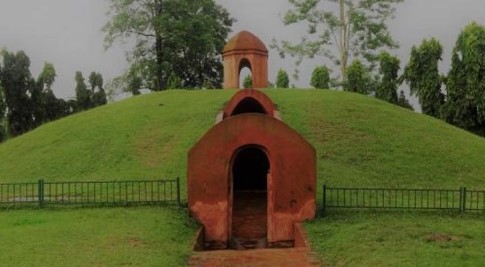The ‘Maidams’ of Assam have made significant progress towards achieving UNESCO World Heritage status, following a recommendation by the International Council on Monuments and Sites or ICOMOS. This recommendation will be reviewed at the 46th session of the World Heritage Committee in New Delhi from July 21 to 31.
The ‘Maidams’ are ancient burial mounds from the Ahom dynasty, known for their pyramid-like structures. They represent a significant cultural heritage of the Tai-Ahom dynasty. Janhwij Sharma of the Archaeological Survey of India (ASI) confirmed that these burial sites meet the criteria for UNESCO recognition. If accepted, it will mark the first cultural property from Northeast Bharat to receive this honour.
World Heritage Committee chairperson Vishal V Sharma highlighted the importance of this potential acknowledgment. The session in Delhi will feature various cultural events and exhibitions, including special displays curated by the Ministry of Tourism and other government bodies.
The event will see participation from over 2,000 delegates from more than 150 countries. Additionally, forums such as the World Heritage Young Professionals Forum and the World Heritage Site Managers’ Forum will focus on heritage conservation and management.
The ‘Maidams’ are characterised by their vaulted chambers (chow-chali), often double-storied, with an arched passage for entry. The structures are topped with hemispherical mounds, layered with bricks and earth, and reinforced with a polygonal toe-wall and an arched gateway on the west. Over time, these mounds are covered with vegetation, giving them the appearance of a series of hillocks, as described on the UNESCO website.
Excavations show that each chamber contains a raised platform where the deceased was laid, accompanied by various items used in life, such as royal insignia, wooden or ivory artifacts, gold pendants, ceramic ware, weapons, and clothes. This reflects the high status of the individuals interred in these sacred sites.

















